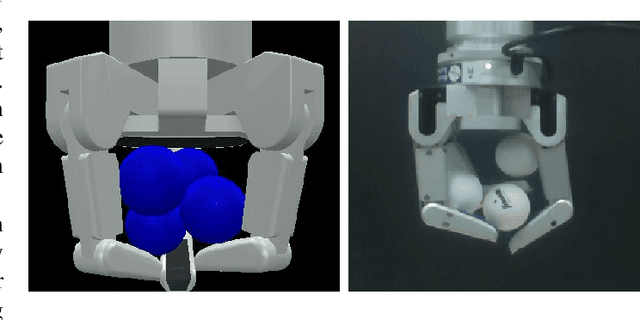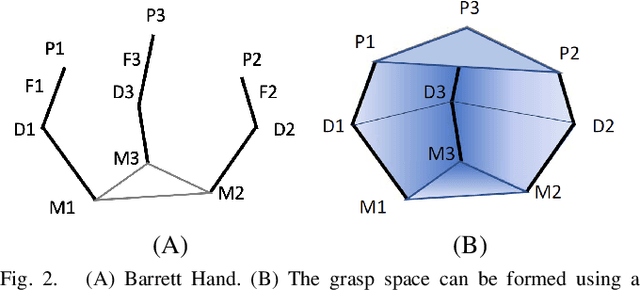Adheesh Shenoy
Multi-Object Grasping -- Generating Efficient Robotic Picking and Transferring Policy
Dec 18, 2021



Abstract:Transferring multiple objects between bins is a common task for many applications. In robotics, a standard approach is to pick up one object and transfer it at a time. However, grasping and picking up multiple objects and transferring them together at once is more efficient. This paper presents a set of novel strategies for efficiently grasping multiple objects in a bin to transfer them to another. The strategies enable a robotic hand to identify an optimal ready hand configuration (pre-grasp) and calculate a flexion synergy based on the desired quantity of objects to be grasped. This paper also presents an approach that uses the Markov decision process (MDP) to model the pick-transfer routines when the required quantity is larger than the capability of a single grasp. Using the MDP model, the proposed approach can generate an optimal pick-transfer routine that minimizes the number of transfers, representing efficiency. The proposed approach has been evaluated in both a simulation environment and on a real robotic system. The results show the approach reduces the number of transfers by 59% and the number of lifts by 58% compared to an optimal single object pick-transfer solution.
Multi-Object Grasping -- Estimating the Number of Objects in a Robotic Grasp
Nov 30, 2021



Abstract:A human hand can grasp a desired number of objects at once from a pile based solely on tactile sensing. To do so, a robot needs to grasp within a pile, sense the number of objects in the grasp before lifting, and predict the number of objects that will remain in the grasp after lifting. It is a challenging problem because when making the prediction, the robotic hand is still in the pile and the objects in the grasp are not observable to vision systems. Moreover, some objects that are grasped by the hand before lifting from the pile may fall out of the grasp when the hand is lifted. This occurs because they were supported by other objects in the pile instead of the fingers of the hand. Therefore, a robotic hand should sense the number of objects in a grasp using its tactile sensors before lifting. This paper presents novel multi-object grasping analyzing methods for solving this problem. They include a grasp volume calculation, tactile force analysis, and a data-driven deep learning approach. The methods have been implemented on a Barrett hand and then evaluated in simulations and a real setup with a robotic system. The evaluation results conclude that once the Barrett hand grasps multiple objects in the pile, the data-driven model can predict, before lifting, the number of objects that will remain in the hand after lifting. The root-mean-square errors for our approach are 0.74 for balls and 0.58 for cubes in simulations, and 1.06 for balls, and 1.45 for cubes in the real system.
 Add to Chrome
Add to Chrome Add to Firefox
Add to Firefox Add to Edge
Add to Edge